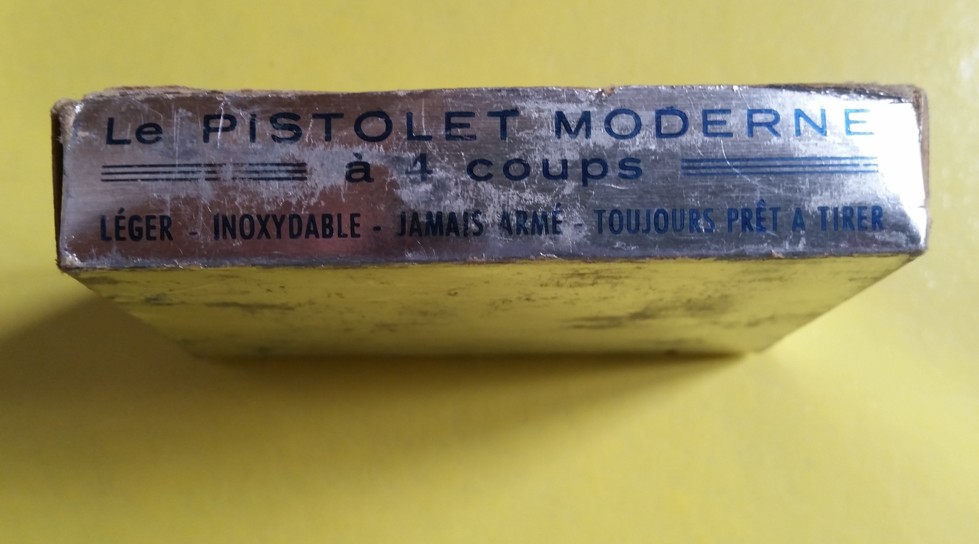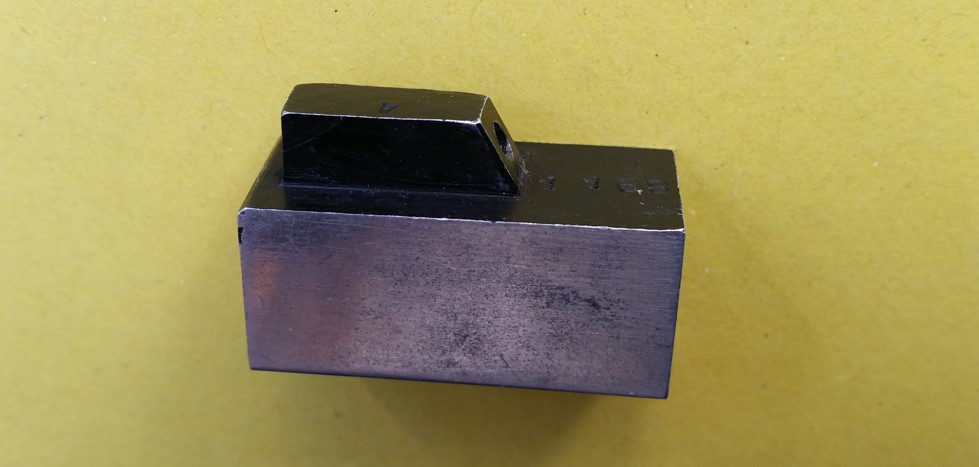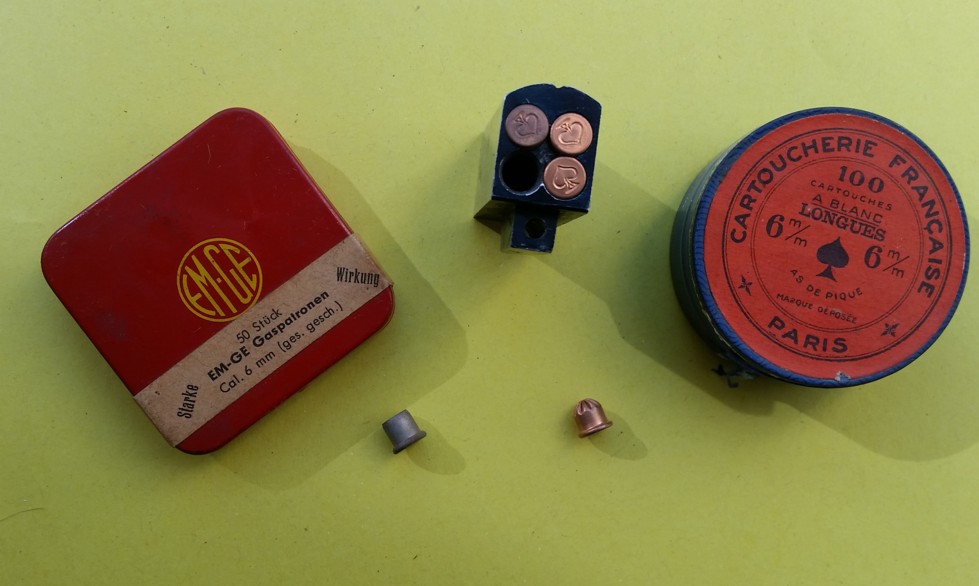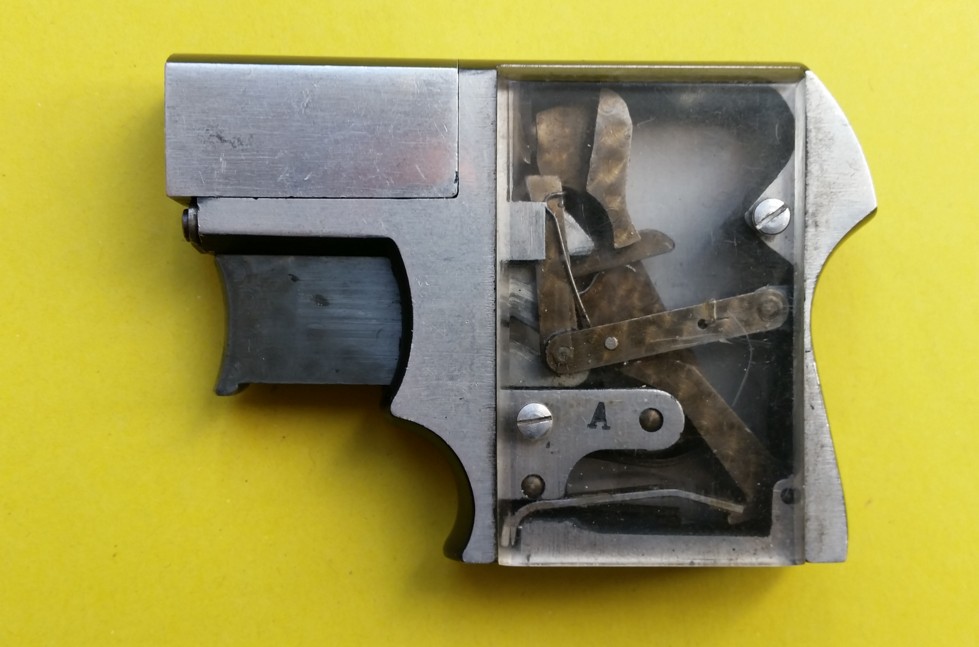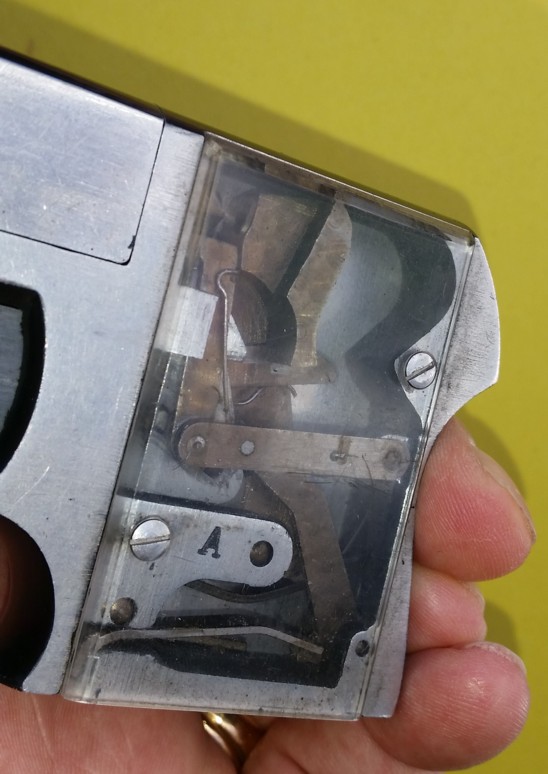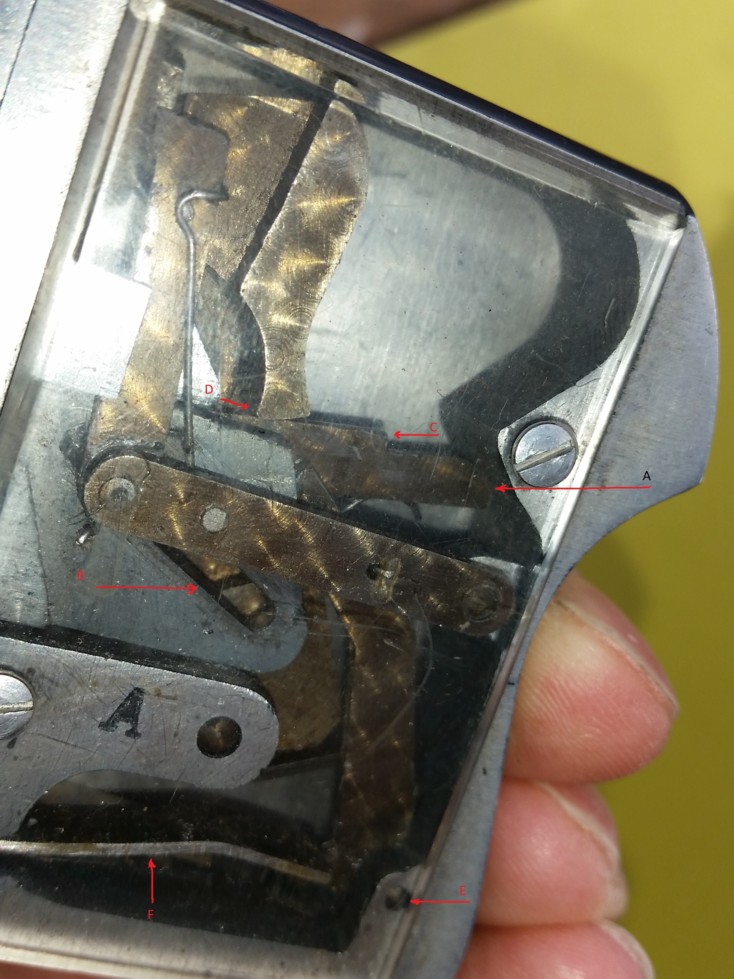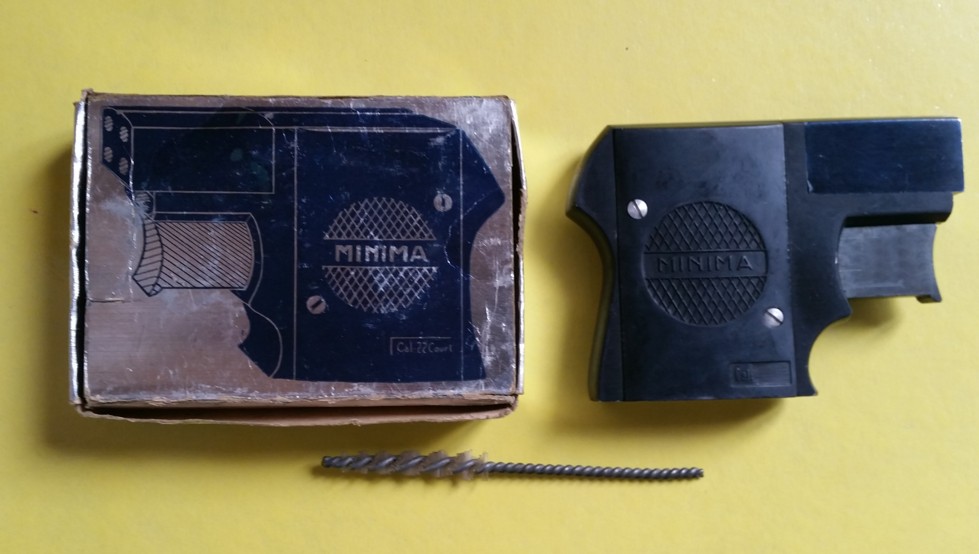
CADET Marcel
The Minima pistol is a weapon with four fixed barrels and a rotating striker. It is the result of the restrictive legislation of 1939 which left weapons in 22 annular caliber free.
In the immediate post-war period, with the 6.35 and 7.65 being regulated, Mr. Marcel Cadet filed a patent application on January 30, 1946 for a "Minima Repeating Pistol" in 22 short caliber. The weapon will be manufactured in more than ten thousand copies by the Boyer company of Saint Etienne, its classification in the 4th category by the law of 1952 will sound the death knell for this company.
The weapon in our possession is a demonstration weapon in 6mm blank. It is made of black anodized aluminum and one side has been left natural to show the two possible finishes. The standard model plates are made of cast aluminum, one of the two has been replaced by a transparent material plate in order to show the mechanism which has been marbled.
The caliber indication, normally 22 short, was milled before anodizing. The serial number is stamped on the heel of the weapon and under the barrel block.
Seen from the front, the barrel block has a 1 cm diameter orifice, which gives it a little look of a liberator. Seen from the back, it has 4 chambers in 6mm annular which accept 6mm blank or gas cartridges. The weapon does not chamber RWS 22 blank cartridges. The inclined part of the tenon under the barrel ensures the correct positioning of the barrel block against the frame and allows it to pivot once the key is removed. The key also allows empty cartridges to be ejected after firing.
The weapon was delivered with a swab in a silver cardboard box with a drawing of the weapon in blue on the top. The front panel says "The MODERN 4-shot light gun - stainless - never cocked - always ready to fire"
The weapon weighs less than 200 grams and is hardly bigger than a pack of gypsy guns. Its grip is uncomfortable, even for small hands, this is mainly due to the significant effort that must be exerted on the trigger to operate it.
When the trigger is pressed, a light at an angle in it (B), via an axis, acts on a connecting rod which rotates the rotating striker by a quarter turn. As the striker is eccentric with respect to its axis, it will be brought successively in front of the four barrels. At the same time a notch on the trigger (C) catches the hammer (D) and cocks it. When the trigger meets the boss of the plate screw (A), it moves away and releases the hammer which, under the effect of a strong leaf spring (F), strikes the striker. The axis of rotation of the hammer (E) is at the bottom of the weapon, as a result the hammer occupies the entire frame during its stroke.
B.C.

